In the arrangement shown in figure., the image of the extended object as seen by the observer is
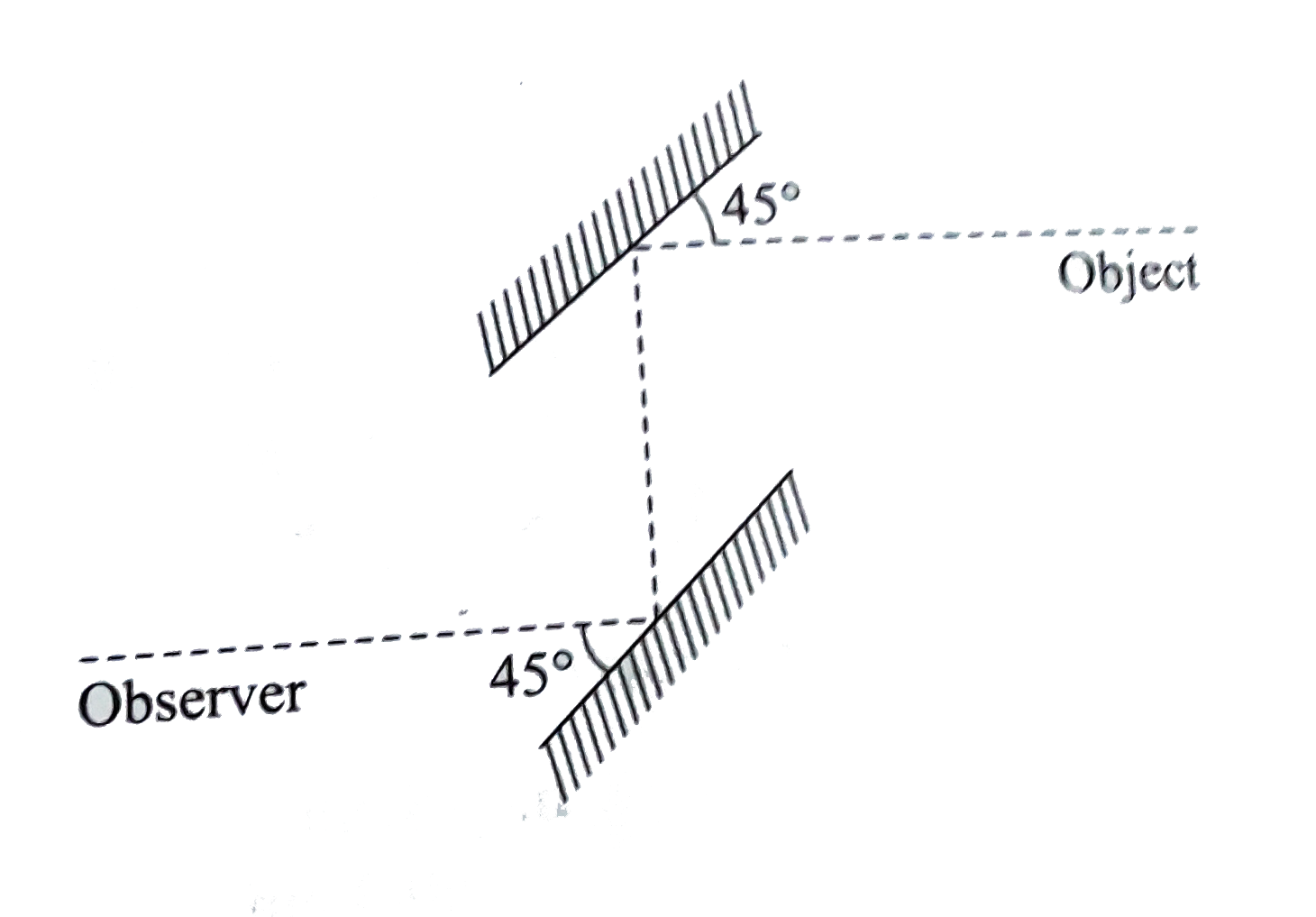
real and inverted
real and erect
virtual and inverted
virtual and erect
The correct Answer is:d.
Ray diagram for image fromation is as shown in figure
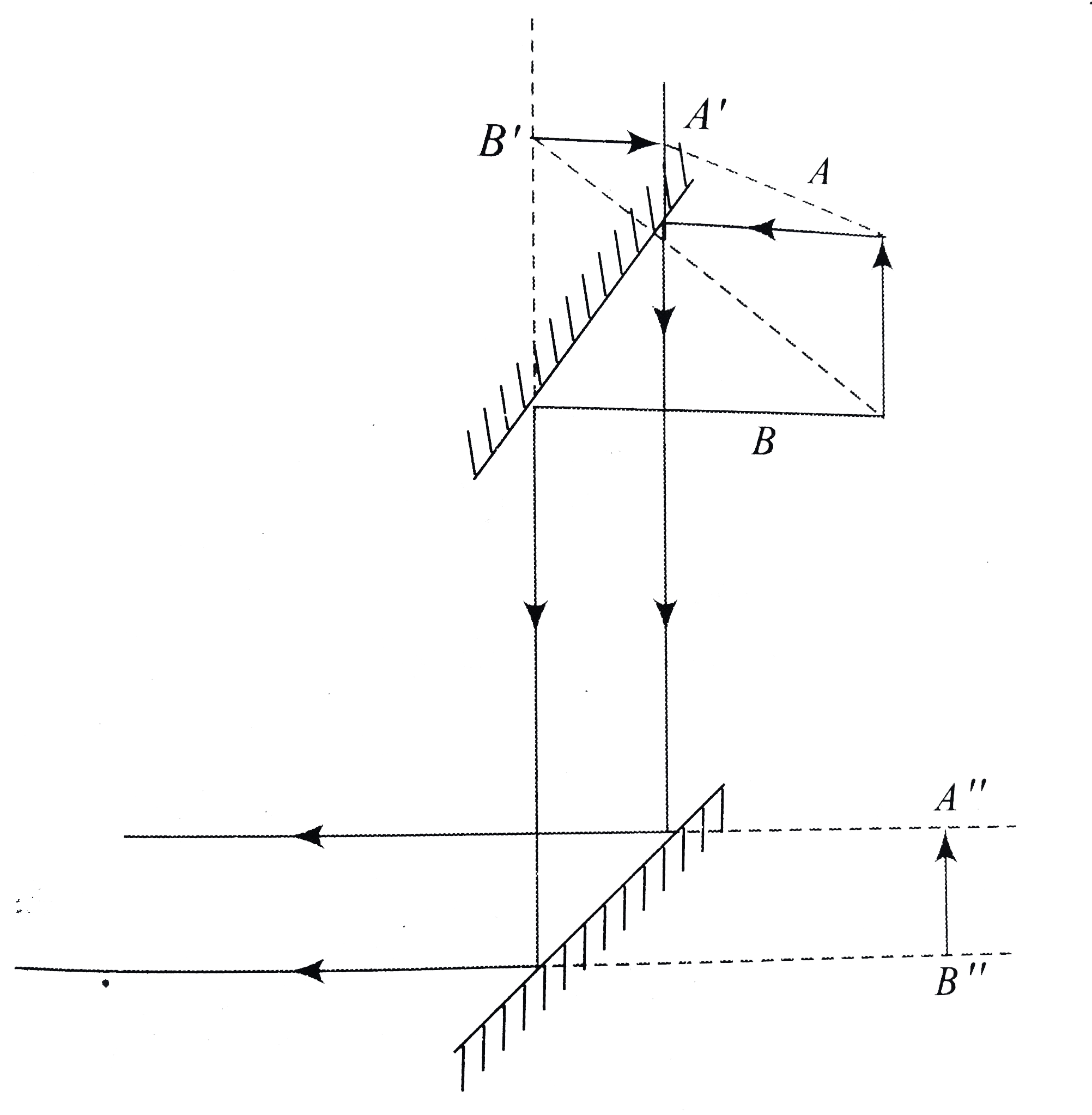
Topper's Solved these Questions
- GEOMETRICAL OPTICSBOOK - CENGAGE PHYSICS ENGLISHCHAPTER - GEOMETRICAL OPTICSEXERCISE - Assertion-Reasoninig
2 Videos
- GEOMETRICAL OPTICSBOOK - CENGAGE PHYSICS ENGLISHCHAPTER - GEOMETRICAL OPTICSEXERCISE - Linked Comprehension
51 Videos
- GEOMETRICAL OPTICSBOOK - CENGAGE PHYSICS ENGLISHCHAPTER - GEOMETRICAL OPTICSEXERCISE - Subjective
26 Videos
- ELECTRON,PHONTS,PHOTOELECTRIC EFFECT & X-RAYSBOOK - CENGAGE PHYSICS ENGLISHCHAPTER - ELECTRON,PHONTS,PHOTOELECTRIC EFFECT & X-RAYSEXERCISE - dpp 3.3
15 Videos
- HEATING EFFECT OF CURRENTBOOK - CENGAGE PHYSICS ENGLISHCHAPTER - HEATING EFFECT OF CURRENTEXERCISE - Thermal Power in Resistance Connected in Circuit
27 Videos
Similar Questions
Consider a transparent hemispher (n=2) in front of which a small object is placed in air (n=1) as shown in figure.
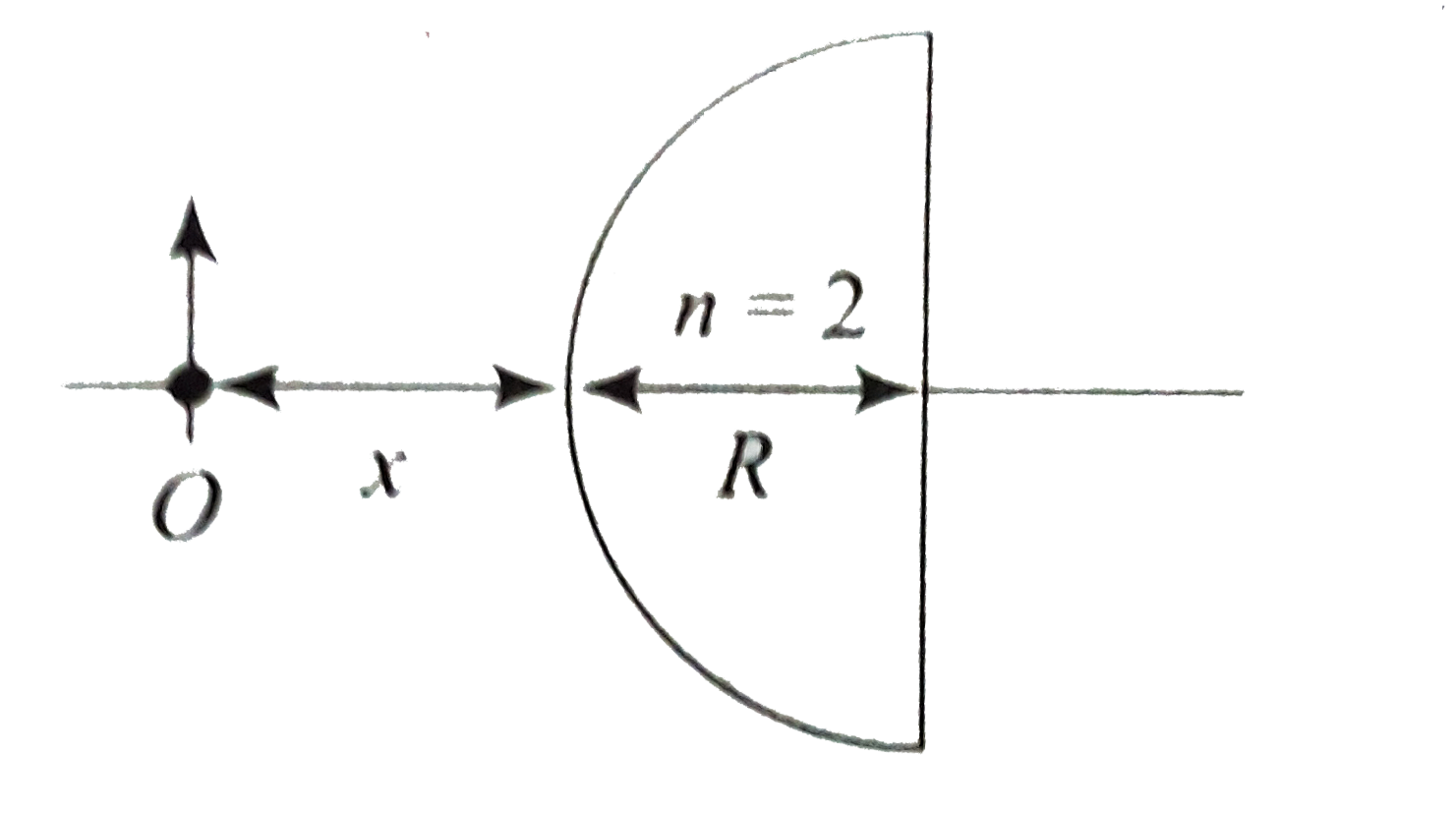
Q. For which value of x, of the following , will the final image of the object O be virtual?
View SolutionConsider a transparent hemispher (n=2) in front of which a small object is placed in air (n=1) as shown in figure.
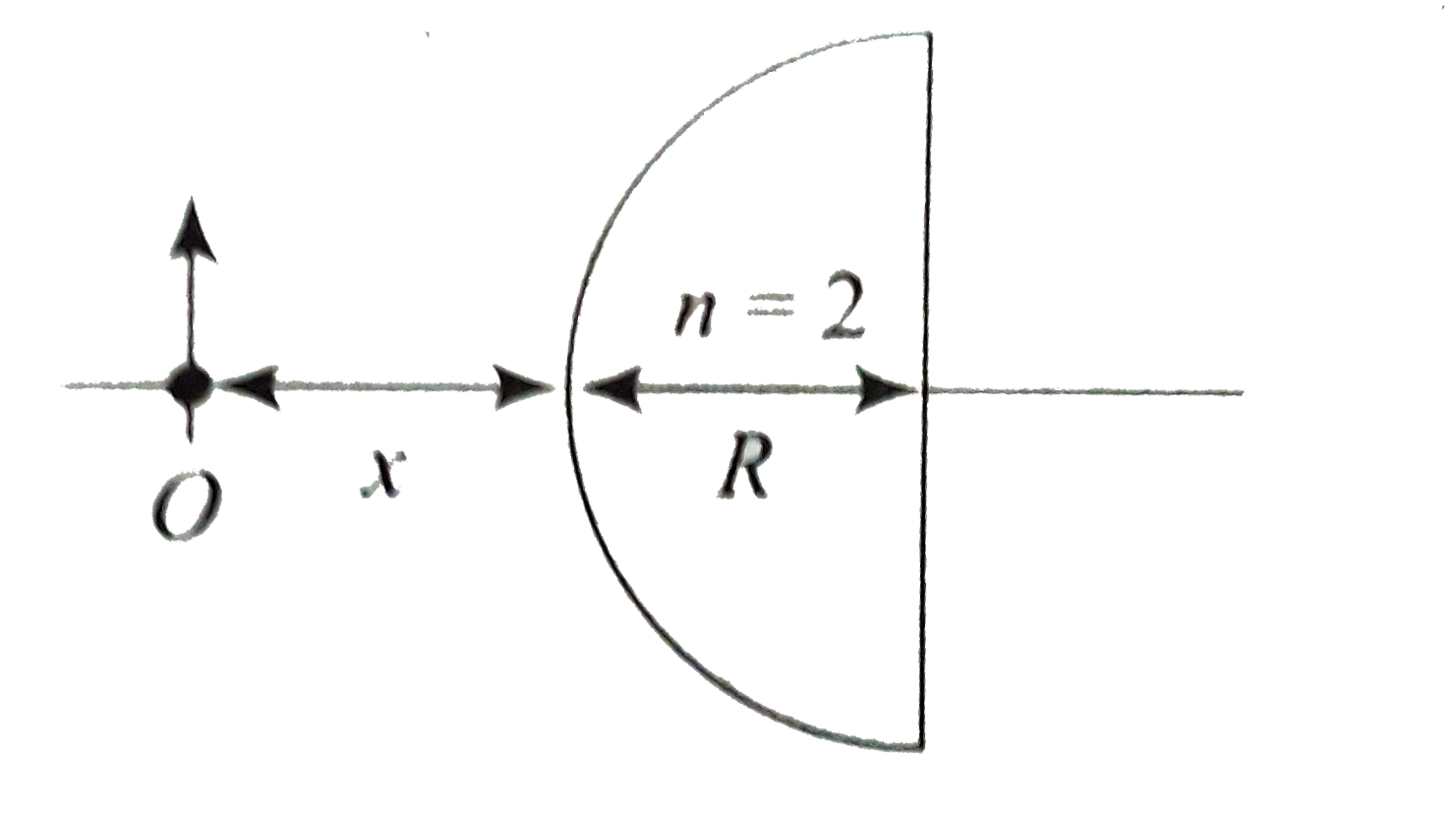
Q. Consider a ray starting from O which strikes the spherical surface at grazing incident (i=90∘). Takin x=R, what will be the angle (from normal) at which the ray may emerge from the plane surface.
View SolutionA ray of light is falling on a glass sphere of μ=√3 such that the incident ray and the emergent ray, when produced, intersect at a point on the surface of the sphere. Find the value of angle of incidence.
View SolutionThe figure shows different graphs between stopping potential (V0) and frequency (v) for photosensitive surface of cesium , potassium , sodium and lithium. The plots are parallel. Correct ranking of the targets according to their work function greatest forst will be
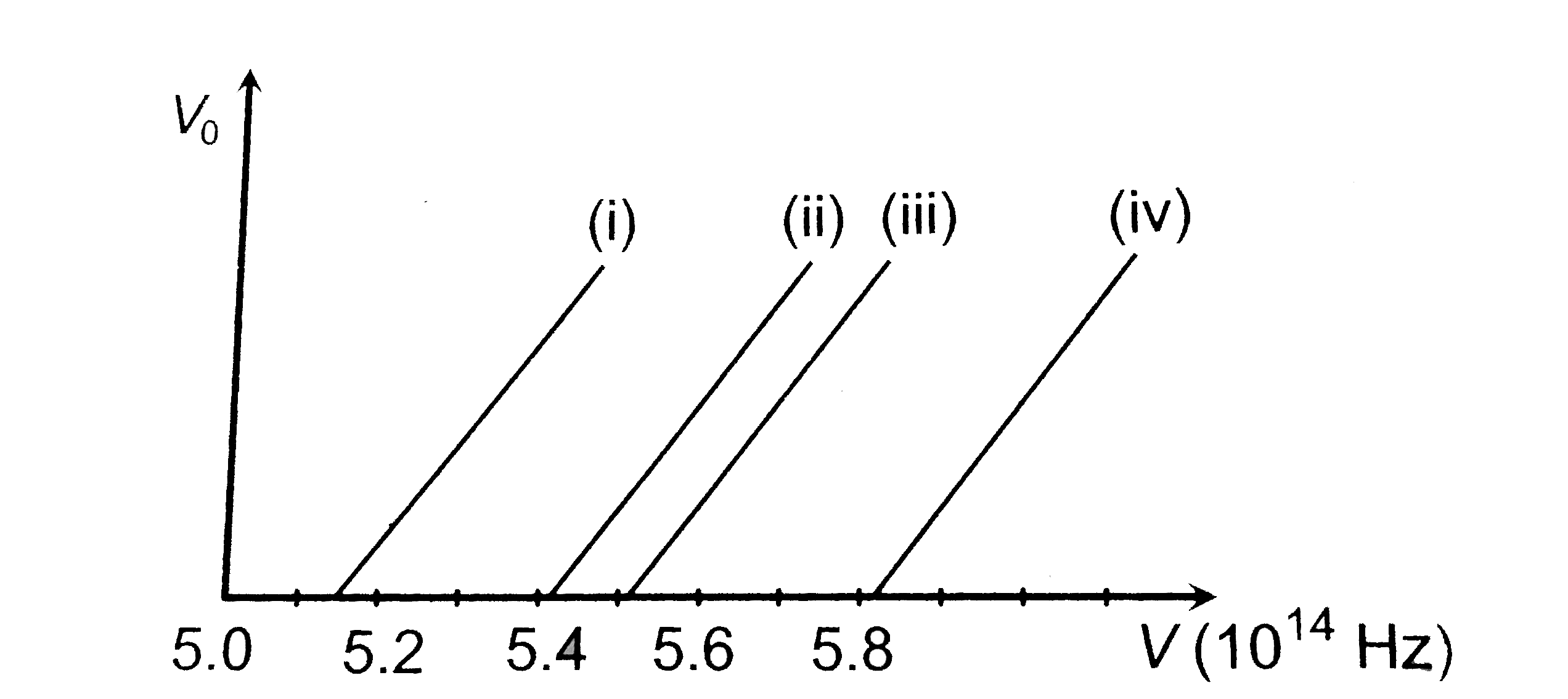
View SolutionA room AC run for 5 hour at a voltage of 220V The wiring of the room constant of Cu of 1mm ratio and a length of 10m consumption per day is 10 commerclal unit What fraction of it goes in the joule heated in wire? What would happen if the wiring is made of aluminum of the same distances? [ρcu=1.7×10−8Ω,ρA1=2.7×10−8Ωm]
View SolutionIn the arrangement shown in figure., the image of the extended object as seen by the observer is

View SolutionIn the arrangement shown in figure, O is the object. An observer is to the left of convex lens and looking towards lens. The observer will see an image
View Solution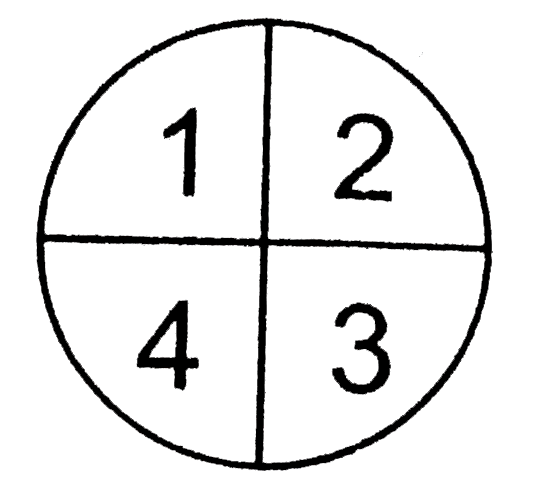
A convex lens is used to form a real image of the object shown in the figure. The real inverted image shown in the following figures is
View SolutionIf a particle is seen through layers of parallel glass slabs of different refractive index as shown in figure. Where mu_(0) is the medium of the observer. If the object has velocity v towarsd observer at this instant along the line joining object and observer then, which of the following correctly represent the velocity of the object as seen by observer?
View SolutionThree plane mirrors are kept as shown in the Figure A point object (O) is kept at the centroid of the triangle seen in the Figure. How many images will be formed?
View SolutionA point luminous object (O) is at a distance h from front face of a glass slab of width d and of refractive index mu . On the back face of slab is a refracting plane mirror. An observer sees the image of object in mirror as shown in figure. Distance of image from front face as seen by observer will be
View SolutionSee the situatiion shown on figure (1) Find the positiion of image as seen by observe A . (2) Find the position of image as seen by observe B .
View SolutionFind the apparent depth of object of the object seen by observe A (in the figure shown)
View SolutionThe image of an object placed at a point A before a plane mirror LM is seen at the point B by an observer at D, as shown in the figure. Prove that the image is as far behind the mirror as the object is in front of the mirror.
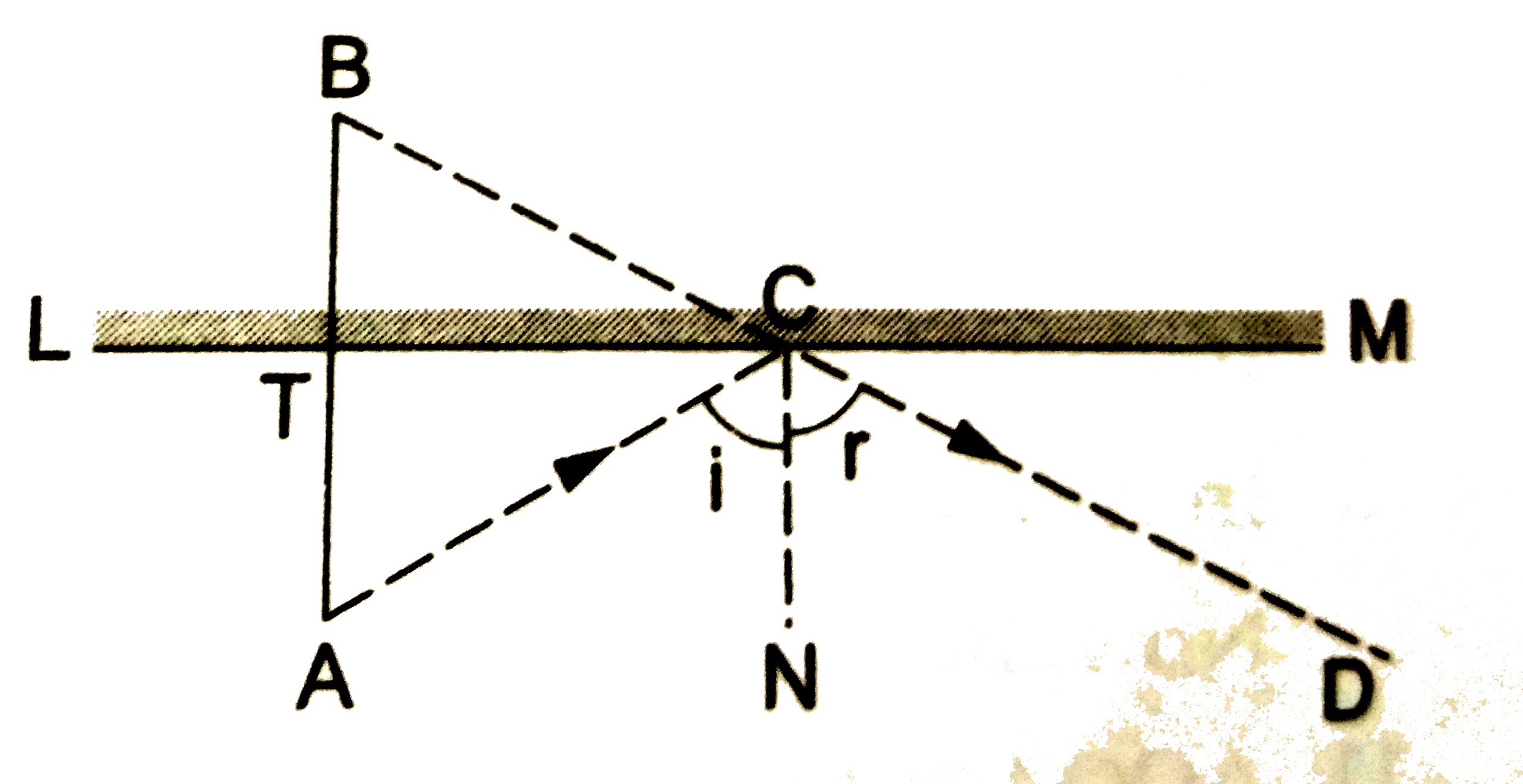
View SolutionFindout the distance between image and the mirror as observed by observer in the figure shown below
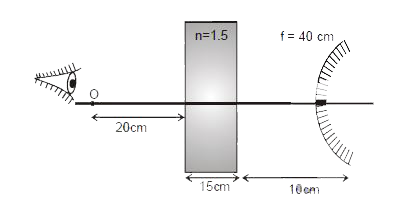
View Solution

